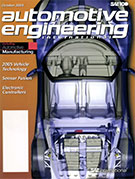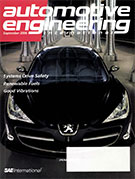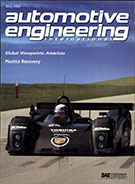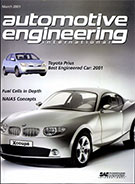Magazine

Autonomous Vehicle Engineering: November 2020
2020-11-05
Editorial Fool Self-Driving The Navigator The end of vehicle ownership Sanitary Solutions for AVs Gentex engineers are bridging mobility and medical technologies to tackle vital public-health issues of vehicle cabin cleanliness. 'Software, Start Your Engines' The 2021 Indy Autonomous Challenge is a high-speed laboratory for advancing automated driving. Getting to the 'Core' of AV Thermal Management Data-gobbling processors require new cooling solutions - and the AV industry needs standards, says a veteran engineer. Autonomy Takes Off-highway Integrating automation systems in mining, agricultural and construction machines can increase safety and productivity in the field and bring significant economic benefits. Boaring in on Vehicle-to-Animal Road Safety Researchers are using micro-Doppler radar, neural nets and machine learning to protect drivers from the wild critters that enter the road.



















